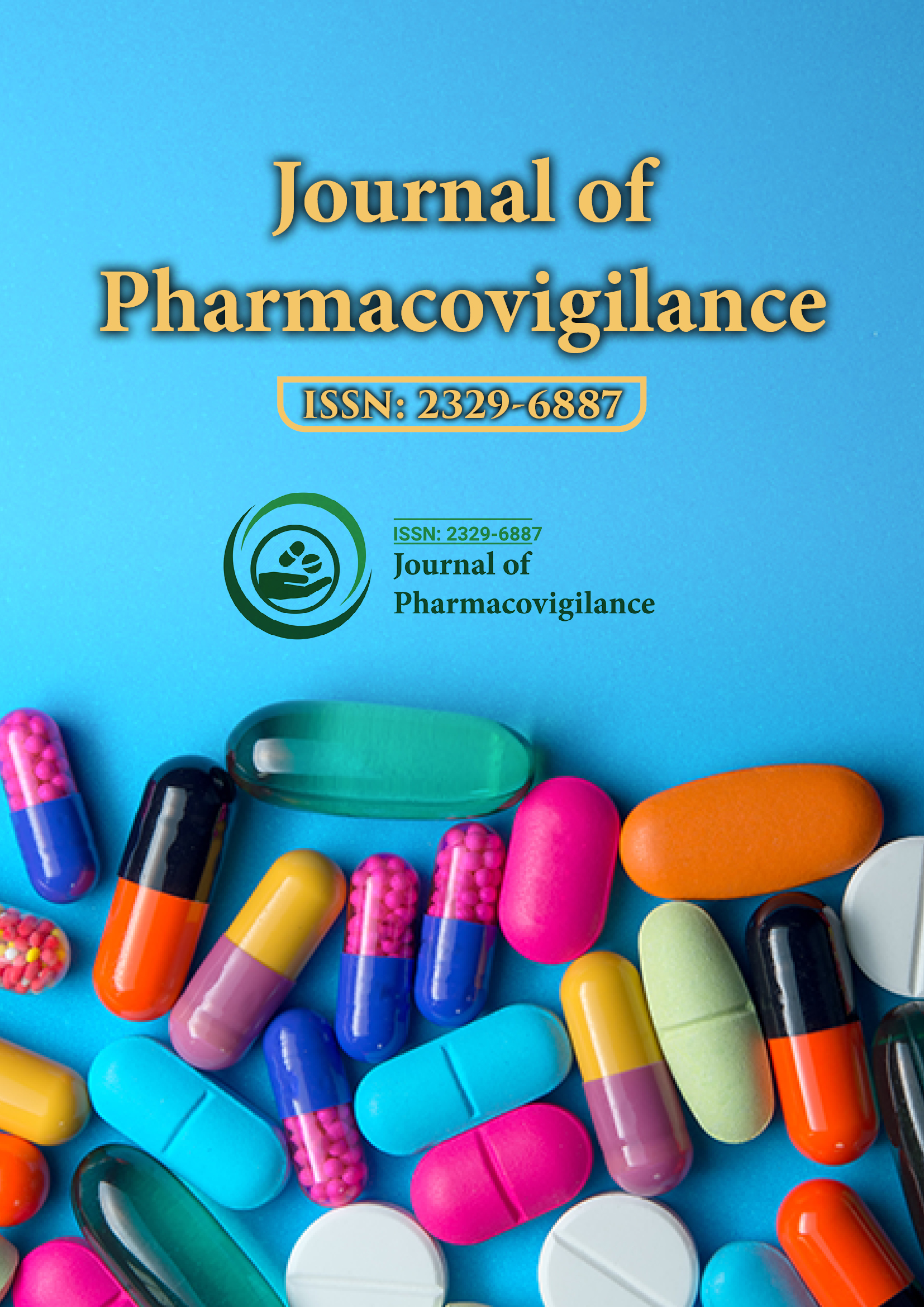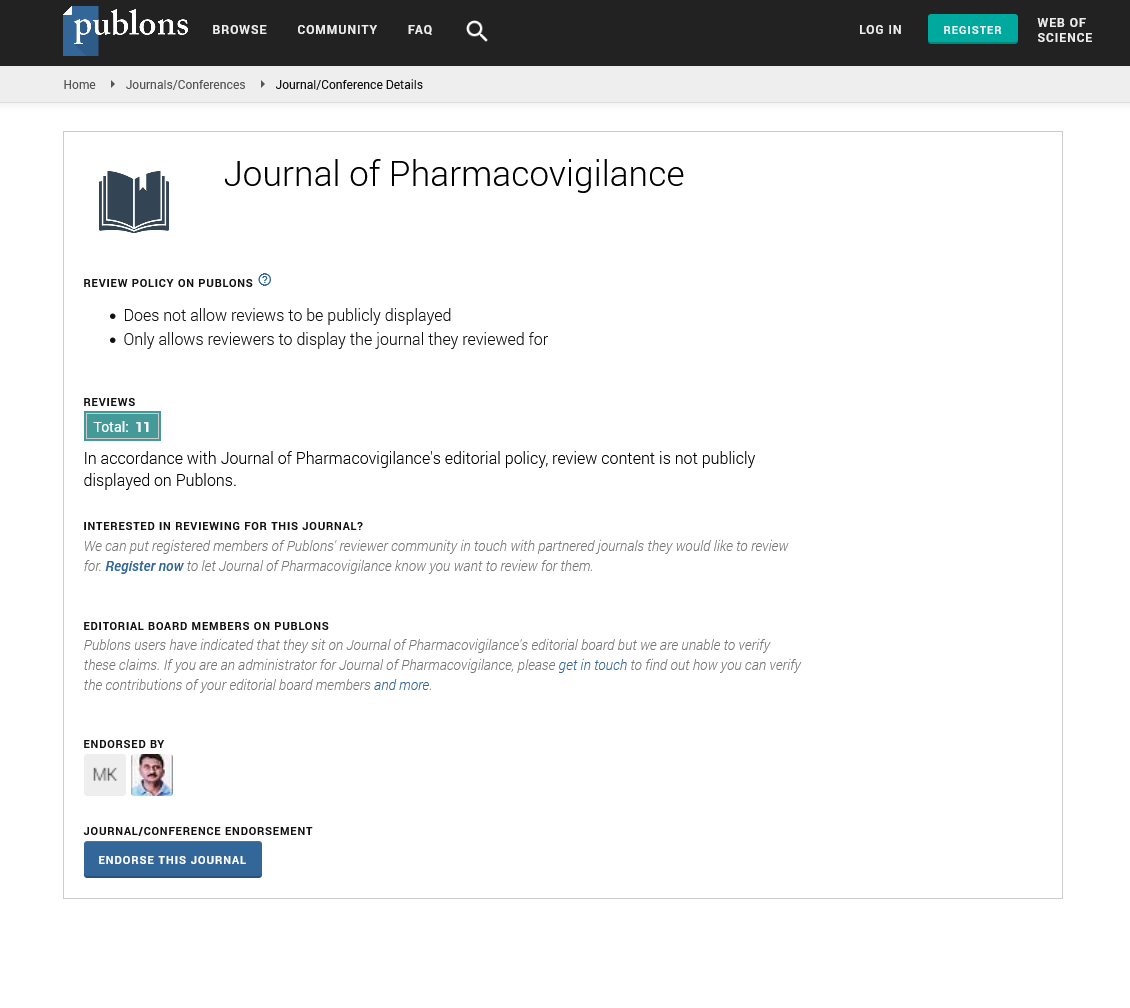Indexed In
- Open J Gate
- JournalTOCs
- The Global Impact Factor (GIF)
- RefSeek
- Hamdard University
- EBSCO A-Z
- OCLC- WorldCat
- Publons
- Euro Pub
- Google Scholar
Useful Links
Share This Page
Journal Flyer

Open Access Journals
- Agri and Aquaculture
- Biochemistry
- Bioinformatics & Systems Biology
- Business & Management
- Chemistry
- Clinical Sciences
- Engineering
- Food & Nutrition
- General Science
- Genetics & Molecular Biology
- Immunology & Microbiology
- Medical Sciences
- Neuroscience & Psychology
- Nursing & Health Care
- Pharmaceutical Sciences
Perspective - (2024) Volume 12, Issue 2
Challenges and Opportunities in Global Pharmacovigilance Systems
Aoshima Megumi*Received: 29-May-2024, Manuscript No. JP-24-25986; Editor assigned: 31-May-2024, Pre QC No. JP-24-25986 (PQ); Reviewed: 14-Jun-2024, QC No. JP-24-25986; Revised: 21-Jun-2024, Manuscript No. JP-24-25986 (R); Published: 28-Jun-2024, DOI: 10.35248/2329-6887.24.12.479
About the Study
Pharmacovigilance, the science of monitoring drug safety, is a fundamental of public health. While significant strides have been made, ensuring comprehensive drug safety surveillance across the globe necessitates addressing persistent challenges and grab emerging opportunities. This manuscript explores these areas, highlighting the importance of collaborative efforts to strengthen global pharmacovigilance systems.
Developing nations often face a significant hurdle in establishing strong pharmacovigilance infrastructure. Limited financial and human resources restrict their capacity for comprehensive data collection, analysis, and effective reporting of Adverse Drug Reactions (ADRs). This creates a gap in global safety surveillance, potentially masking risks associated with medications used in these regions.
The reliability of pharmacovigilance data hinges on its quality. Incomplete or inaccurate reporting due to factors like under-reporting by healthcare professionals and limited training can compromise the ability to detect safety signals. Furthermore, a weak culture of ADR reporting among patients further diminishes the comprehensiveness of safety data.
National regulations and reporting formats for ADRs vary considerably across the globe. This heterogeneity creates hurdles in data sharing and hinders the ability to conduct comprehensive analyses of global drug safety trends. Harmonized reporting standards are crucial for a unified approach to pharmacovigilance.
Public awareness about pharmacovigilance and the importance of reporting ADRs remains relatively low. This limits the capture of valuable safety data from a crucial stakeholder group – patients themselves. Strategies to enhance public education and engagement are essential for a more comprehensive understanding of drug safety.
The medical landscape is constantly evolving, with personalized therapies, combination drug regimens, and novel technologies emerging. Traditional pharmacovigilance methods may not be fully equipped to capture safety data associated with these advancements. New tools and methodologies are needed to keep pace with the changing nature of medicine.
Advanced data analytics, Artificial Intelligence (AI), and big data solutions hold immense potential for revolutionizing pharmacovigilance. Real-time data processing, pattern recognition through AI, and the ability to analyze vast datasets can significantly enhance signal detection and risk identification.
International partnerships between regulatory agencies, research institutions, and healthcare providers can encouraging knowledge sharing and promote harmonized reporting standards. Collaborative efforts can facilitate the development of standardized data collection formats and shared platforms for global pharmacovigilance data analysis.
Targeted educational campaigns and user-friendly reporting platforms can empower patients and healthcare professionals to actively participate in pharmacovigilance. Educational programs can raise awareness about ADR reporting, while user-friendly platforms can streamline the reporting process, encouraginging a more strong culture of pharmacovigilance.
Analyzing Electronic Health Records (EHRs) and other Real- World Data (RWD) sources can provide a more comprehensive picture of drug safety in diverse populations. RWD can complement clinical trial data by capturing safety information in a broader, real-world context.
Pharmacovigilance can play a vital role in monitoring the safety of new frontiers in medicine like gene therapies and personalized medicine. As these areas develop, strong pharmacovigilance systems will be crucial for ensuring patient safety and building trust in these novel approaches.
Conclusion
Building a strong global pharmacovigilance system requires a multi-faceted approach. By controlling the power of technology, encouraginging international collaboration, and promoting public engagement, we can address the challenges hindering comprehensive drug safety surveillance. In a constantly evolving healthcare landscape, a strengthened global pharmacovigilance system is important to safeguarding public health and ensuring the safe and effective use of medications worldwide.
Citation: Megumi A (2024) Challenges and Opportunities in Global Pharmacovigilance Systems. J Pharmacovigil. 12:479.
Copyright: © 2024 Megumi A. This is an open-access article distributed under the terms of the Creative Commons Attribution License, which permits unrestricted use, distribution, and reproduction in any medium, provided the original author and source are credited.

